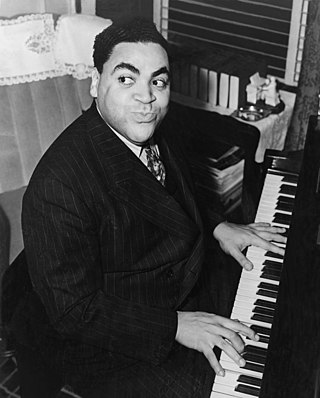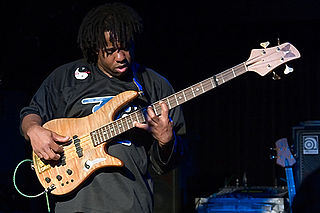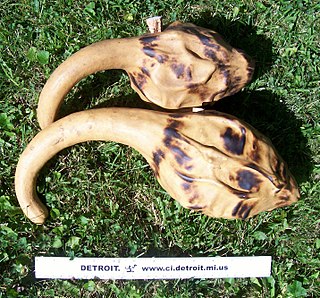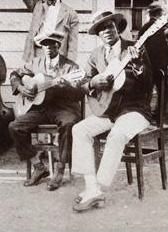In Shona music, the kushaura is the leading part. Compare with the kutsinhira part.
The kushaura can be thought of being the first part, with the kutsinhira usually being a beat behind, within a cycle of 12 beats. However, this is not always the case. Furthermore, certain parts are both kushaura and kutsinhira parts, depending on where they are played. Typically a kushaura of this type is played a beat behind to make a kutsinhira.
In the most standard form, both kushaura and kutsinhira parts can be conceptualized as a repetition of a sequence of four cycles in a western 12/8 meter with all notes falling exactly on one of the twelve eighth-note subdivisions. However the beginning of the cycle is not standardized, and may be different for different regions, players, and musical parts. In general the primary beat of the hosho falls on every three subdivisions, which can result in a 4/4-like sound. However the kushaura or kutsinhira parts also come in varieties that typically sound as a 3/4 part to most westerners. In this case, the two parts, nominally 4/4 and 3/4, combine in a polyrhythm encompassed by the conceptualization of the piece as 12/8, and sync at every 12 eighth notes. Some kushaura parts may sound like they begin with an upbeat to the western ear, whereas the first note actually lands on the beat itself.
Both kushaura and kutsinhira parts typically have high lines played by the right hand (on the right manual of the mbira dzavadzimu), and these lines tend to be composed of notes that alternate on every other eighth note. The other defining feature of the kushaura in contrast with the kustinhira is that these high line notes are in alternating opposition to the notes of the kutsinhira, forming an interlocked high line composed of the right hand notes of both players. In many transcriptions, the first right hand note of the kushaura will fall on the eighth note immediately after the first hosho beat, whereas the kutsinhira's will fall directly on this beat—however since the beginning of a given cycle is somewhat arbitrary, this description is context-specific to these standard conceptualizations of the beginnings. Viewing a single line, especially in the left hand (lower) part, changing the perceived beginning of the cycle will often change the perceptual modal structure of the line.
Example from Nhemamusasa (using western approximation of notes)
- version 1: CCEEAA CCFFAA DDFFAA CCEEGG
- version 2: FFAADD FFAACC EEGGCC EEAACC (same notes, different cycle divisions)
Typically the player playing the kushaura part leads the performance in choosing variations to play, whereas the kutsinhira player will attempt to follow that lead with complementary parts. Variations exist for both the right hand, and left hand. Some variations of the left hand are almost exclusively played on the upper left manual, entirely avoiding the bottom left one.
Typical to the right hand part are repeating notes, as well as descending, but not ascending, lines, for example:
- GGGGFEDD GGFEDDBB DDCCBBAA (Taireva, separated into three descending lines)
- FFEEDDCCBAGG EEDDCCBBAAGG (Nhemamusasa, separated into two descending lines)
In the right hand, the most common chord is the octave composed of the far-left key played with the thumb, and the fourth key, played with the index finger. In the left hand, consecutive octaves and fifths are common, whereas thirds of chords are generally avoided, and chords entirely within the left hand are not played on most typical instruments, because only a single digit, the thumb, is used.

A musical keyboard is the set of adjacent depressible levers or keys on a musical instrument. Keyboards typically contain keys for playing the twelve notes of the Western musical scale, with a combination of larger, longer keys and smaller, shorter keys that repeats at the interval of an octave. Pressing a key on the keyboard makes the instrument produce sounds—either by mechanically striking a string or tine, plucking a string (harpsichord), causing air to flow through a pipe organ, striking a bell (carillon), or activating an electronic circuit. Since the most commonly encountered keyboard instrument is the piano, the keyboard layout is often referred to as the piano keyboard or simply piano keys.

In music performances, rhythm guitar is a technique and role that performs a combination of two functions: to provide all or part of the rhythmic pulse in conjunction with other instruments from the rhythm section ; and to provide all or part of the harmony, i.e. the chords from a song's chord progression, where a chord is a group of notes played together. Therefore, the basic technique of rhythm guitar is to hold down a series of chords with the fretting hand while strumming or fingerpicking rhythmically with the other hand. More developed rhythm techniques include arpeggios, damping, riffs, chord solos, and complex strums.

Mbira are a family of musical instruments, traditional to the Shona people of Zimbabwe. They consist of a wooden board with attached staggered metal tines, played by holding the instrument in the hands and plucking the tines with the thumbs, the right forefinger, and sometimes the left forefinger. Musicologists classify it as a lamellaphone, part of the plucked idiophone family of musical instruments. In Eastern and Southern Africa, there are many kinds of mbira, often accompanied by the hosho, a percussion instrument. It is often an important instrument played at religious ceremonies, weddings, and other social gatherings. The "Art of crafting and playing Mbira/Sansi, the finger-plucking traditional musical instrument in Malawi and Zimbabwe" was added to the UNESCO Representative List of the Intangible Cultural Heritage of Humanity in 2020.

Polyrhythm is the simultaneous use of two or more rhythms that are not readily perceived as deriving from one another, or as simple manifestations of the same meter. The rhythmic layers may be the basis of an entire piece of music (cross-rhythm), or a momentary section. Polyrhythms can be distinguished from irrational rhythms, which can occur within the context of a single part; polyrhythms require at least two rhythms to be played concurrently, one of which is typically an irrational rhythm. Concurrently in this context means within the same rhythmic cycle. The underlying pulse, whether explicit or implicit can be considered one of the concurrent rhythms. For example, the son clave is poly-rhythmic because its 3 section suggests a different meter from the pulse of the entire pattern.

Stride jazz piano, often shortened to stride, is a jazz piano style that arose from ragtime players. Prominent stride pianists include James P. Johnson, Willie "the Lion" Smith, Fats Waller, Luckey Roberts, and Mary Lou Williams.

Bassline is the term used in many styles of music, such as blues, jazz, funk, dub and electronic, traditional, and classical music, for the low-pitched instrumental part or line played by a rhythm section instrument such as the electric bass, double bass, cello, tuba or keyboard.

The hosho are Zimbabwean musical instruments consisting of a pair of maranka (mapudzi) gourds with seeds. They are used as major instruments in many traditional Shona music genres, such as in mbira ensembles and in mhande. They typically contain hota seeds inside them. Before the hota seeds are added, the hosho is boiled in salted water and the inside is scraped out with a corncob, newspaper plug, or woven wire. Removing the debris inside the hosho allows for a more sharp and percussive tone.

Gamelan gong kebyar is a style or genre of Balinese gamelan music of Indonesia. Kebyar means "to flare up or burst open", and refers to the explosive changes in tempo and dynamics characteristic of the style.

Braille music is a braille code that allows music to be notated using braille cells so music can be read by visually impaired musicians. The system was incepted by Louis Braille.

Six moments musicaux, Op. 16, is a set of solo piano pieces composed by the Russian composer Sergei Rachmaninoff between October and December 1896. Each Moment musical reproduces a musical form characteristic of a previous musical era. The forms that appear in Rachmaninoff's incarnation are the nocturne, song without words, barcarolle, virtuoso étude, and theme and variations.
Shona music is the music of the Shona people of Zimbabwe. There are several different types of traditional Shona music including mbira, singing, hosho and drumming. Very often, this music will be accompanied by dancing, and participation by the audience. In Shona music, there is little distinction between the performer and the audience, both are often actively involved in the music-making, and both are important in the religious ceremonies where Shona music is often heard.

The Variations and Fugue on a Theme by Handel, Op. 24, is a work for solo piano written by Johannes Brahms in 1861. It consists of a set of twenty-five variations and a concluding fugue, all based on a theme from George Frideric Handel's Harpsichord Suite No. 1 in B♭ major, HWV 434. They are known as his Handel Variations.

In Zimbabwean Shona music, a deze is a halved calabash gourd that an mbira is placed into to amplify its sound. It is typically round and has bottle caps, shells or other objects strung around its perimeter to vibrate with the mbira, creating a buzzing sound. Cracked deze frequently are repaired by wire stitching. Because of the size of the deze, audience members cannot see the mbira players' hands. Because of this, it is not uncommon for those who want to learn the mbira to play the hosho first, so that they can stand behind the players to see into deze and learn by observation. Modern deze are often constructed out of fiberglass and epoxy for increased durability. However, some mbira players, like Chartwell Dutiro, critique the use of fiberglass dezes in live performance. Dutiro says it compromises the resonance of the mbira and thus hinders communication with dza vadzimu.

The Array mbira is a handcrafted modern musical instrument with a unique harp- or bell-like sound. It is made in the United States by its inventor Bill Wesley and manufactured by Wesley with Patrick Hadley in San Diego, California, United States. Its development began in the 1960s. It is a radical redesign of the Shona African mbira from Zimbabwe and is part of the lamellaphone family.

The Stradella Bass System is a buttonboard layout equipped on the bass side of many accordions, which uses columns of buttons arranged in a circle of fifths; this places the principal major chords of a key in three adjacent columns.
Excursions, Op. 20, is the first published solo piano piece by Samuel Barber. Barber himself explains:
These are ‘Excursions’ in small classical forms into regional American idioms. Their rhythmic characteristics, as well as their source in folk material and their scoring, reminiscent of local instruments are easily recognized.

The Prelude in C minor, Op. 23, No. 7 is a 1903 composition by Sergei Rachmaninoff. It is part of Rachmaninoff's Ten Preludes, Op. 23.
Bira is an all-night ritual, celebrated by Shona people from Zimbabwe in which members of an extended family call on ancestral spirits for guidance and intercession. Shona people believe that the only ones who can communicate with both the living and God are the ancestral spirits, or dzavadzimu. These spirits are summoned during the Bira ceremonies through the use of music and ritual dance. Bira ceremonies are also held to welcome back the spirit of an ancestor into the home where a family member is a svikiro who is occasionally possessed by one or more ancestors.

A guajeo is a typical Cuban ostinato melody, most often consisting of arpeggiated chords in syncopated patterns. Some musicians only use the term guajeo for ostinato patterns played specifically by a tres, piano, an instrument of the violin family, or saxophones. Piano guajeos are one of the most recognizable elements of modern-day salsa. Piano guajeos are also known as montunos in North America, or tumbaos in the contemporary Cuban dance music timba.

Mbira DzeNharira was formed by Tendayi Gahamadze in 1987 in Norton, a town 40 km west of Harare. To date they have released 11 CD and 3 DVD albums.















